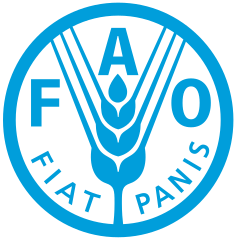FAO Strategic Framework for 2022-31 is focused to support the transformation to a more efficient, inclusive, resilient and sustainable agrifood systems for better production, better nutrition, a better environment, and a better life, leaving no one behind. It has 20 Programme Priority Areas (PPAs) and serves as a guiding principle and an innovative business model for FAO to assists tis Members in addressing the interlinked economic, social and environmental dimensions of agrifood systems through innovative and sustainable approaches, thus contributing to achieving the United Nations’ Sustainable Development Goals (SDGs).
Under the PPA Better Production 1 (BP1) – Innovation for Sustainable Agriculture Production, FAO aims to support countries, family farmers and small producers to integrate sustainable agriculture practices, technologies, policies and other innovations for increased crop, livestock and forestry productivity that optimize structure, functionality and service of agricultural systems while minimizing inputs. It will do so by leveraging the four cross-cutting ‘sustainable accelerators’ of technology, innovation (including digital), data (including big data) and complements (human capital, governance, institutions); and three sectorial focus areas on crop production, livestock, and forestry (including integrated agro-forestry systems) to foster the sustainability of agriculture, economic development and livelihoods, and address the rehabilitation of degraded lands, water and ecosystems. Importantly, the PPA will consider the factors that constrain or enable innovation, including inequitable or insecure access to resources, and the constraints to sustainable production investments by smallholders and family farms, including limited economic returns or profitability and uninsured risk.
In this context, it was agreed to use the area under Conservation Agriculture (CA) as one of the indicators for Medium Term reporting under the PPA BP1. Because the CA is based on three main principles adapted to reflect local conditions and needs – minimum mechanical soil disturbance; permanent soil organic cover and species diversification and a sustainable farming system that can prevent losses of arable land while regenerating degraded lands.
To meet this requirement, FAO is analysing the evolution of CA, where this survey will be a useful tool to perform this task. This will also give a clear picture on global the adoption and spread of CA worldwide up to the season 2022/23 where available, including the adoption in continents.
The completion of this survey will take you about 10 minutes. You can access the survey in the link: https://conservationagriculturesurvey.org/formulario/


